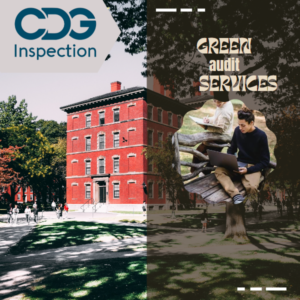Introduction:
In the face of pressing environmental challenges, organizations worldwide are recognizing the need to adopt sustainable practices. Green audits have emerged as a powerful tool to assess and optimize environmental performance. This blog post explores the power of green audits and how they unlock the potential for organizations to embrace sustainability, reduce their ecological footprint, and contribute to a greener future.
Section 1: Understanding Green Audits
Defining green audits and their role in evaluating and improving environmental practices.
Highlighting the importance of comprehensive assessments that encompass energy consumption, waste management, water usage, emissions, and other environmental factors.
Emphasizing the goal of green audits: to drive positive change, enhance sustainability, and maximize organizational efficiency.
Section 2: Benefits of Green Audits
- Enhanced Environmental Performance: Green audits provide insights into current practices, enabling organizations to identify areas for improvement and implement effective strategies.
- Cost Savings: By optimizing resource utilization, organizations can reduce energy, water, and waste management costs.
- Regulatory Compliance: Green audits help organizations ensure compliance with environmental regulations, reducing the risk of penalties and legal issues.
- Stakeholder Engagement: Demonstrating commitment to sustainability through green audits enhances reputation and attracts environmentally conscious stakeholders.
- Innovation and Efficiency: Green audits foster a culture of innovation, encouraging organizations to explore new technologies and practices that lead to increased efficiency and reduced environmental impact.
Section 3: The Green Audit Process
- Setting Objectives: Clearly define the purpose, scope, and goals of the audit.
- Data Collection and Analysis: Gathering and analyzing relevant data on energy consumption, waste generation, water usage, emissions, and other pertinent factors.
- Evaluation and Benchmarking: Comparing performance metrics against industry standards, best practices, and previous audit results.
- Action Planning: Identifying improvement opportunities and developing an actionable plan to enhance sustainability practices.
- Monitoring and Review: Continuously monitor progress, evaluate the effectiveness of implemented measures, and make necessary adjustments.
Section 4: Leveraging Green Audit Findings
Implementing Sustainable Practices: Using audit insights to guide the adoption of sustainable practices such as energy efficiency measures, waste reduction strategies, and water conservation initiatives.
Employee Engagement: Involving employees in the green audit process to foster a sense of ownership and drive a culture of sustainability within the organization.
Stakeholder Communication: Transparently communicating green audit findings and sustainability efforts to stakeholders, showcasing progress, and seeking feedback.
Continuous Improvement: Treating green audits as a continuous process, striving for ongoing improvement, and setting new sustainability targets.
Section 5: Inspiring Others: The Ripple Effect
Encouraging Partnerships: Collaborating with suppliers, customers, and industry peers to exchange best practices and collectively drive sustainability initiatives.
Influencing Policy: Organizations with strong green audit outcomes can advocate for sustainable policies, influencing governments and regulatory bodies to prioritize environmental stewardship.
Spreading Awareness: Leveraging green audit success stories to educate and inspire others, encouraging broader adoption of sustainable practices.
Conclusion:
Green audits empower organizations to assess, optimize, and elevate their environmental performance. By leveraging the power of green audits, organizations can unlock their sustainability potential, achieve cost savings, enhance their reputation, and contribute to a greener future. Let us embrace the transformative power of green audits and pave the way for a more sustainable and environmentally responsible world. Together, we can make a significant impact and leave a positive legacy for generations to come.


